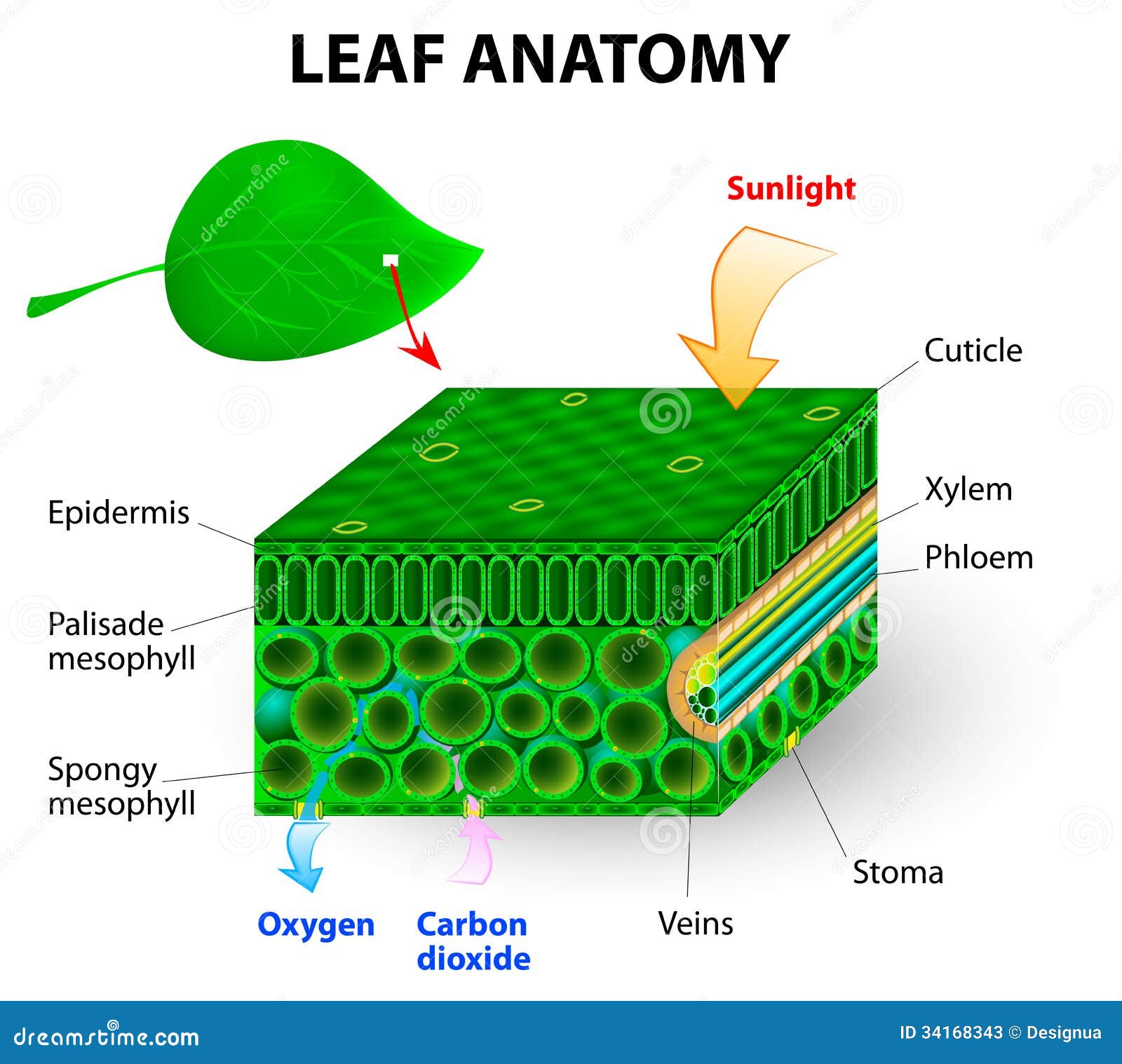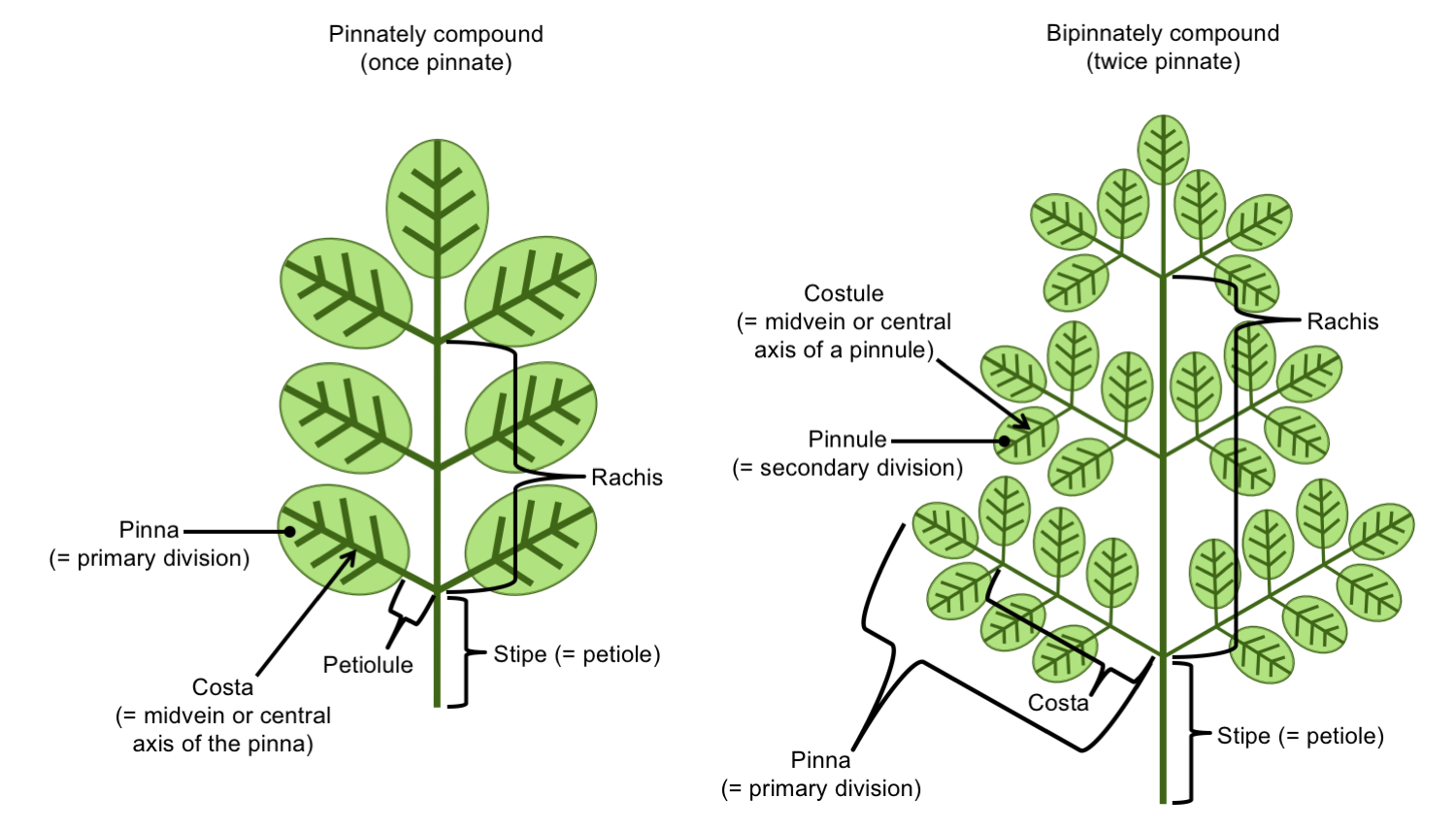
Labeled Diagram Of A Leaf
A Guide to Understand Leaf with Diagram Photosynthesis is the process that generates food for the plant, and leaves play a significant role in the process. They convert photon energy into chemical energy. The structure of the leaf contributes to the process. It also participates in the transportation of water and nutrients.

Draw a labelled diagram of the external structure of a leaf. Brainly.in
Recent News Dec. 8, 2023, 5:45 AM ET (The Gleaner) Canadian gov't awards $19.5M to organisations supporting. leaf, in botany, any usually flattened green outgrowth from the stem of a vascular plant. As the primary sites of photosynthesis, leaves manufacture food for plants, which in turn ultimately nourish and sustain all land animals.

Diagram of a leaf showing typical features of a dicot Flickr
Figure 9.3. 2: Cross section of a hydrophytic leaf. Observe a prepared slide of a hydrophyte, such as Nymphaea, commonly called a water lily. Note the thin epidermal layer and the absence of stomata in the lower epidermis. In the spongy mesophyll, there are large pockets where air can be trapped.

Leaf Labelled Stock Photo Download Image Now iStock
GCSE WJEC Structure of plants - WJEC Leaf structure Plants adapt in order to efficiently collect raw materials required for photosynthesis. These raw materials must be transported through the.
/parts_of_a_leaf-56abaed23df78cf772b5625a.jpg)
Plant Leaves and Leaf Anatomy
Like the stem, the leaf contains vascular bundles composed of xylem and phloem (Figure 3.4.2.6 − 7 3.4.2. 6 − 7 ). When a typical stem vascular bundle (which has xylem internal to the phloem) enters the leaf, xylem usually faces upwards, whereas phloem faces downwards. The conducting cells of the xylem (tracheids and vessel elements.

Changing Seasons, Fall Leaves, and Your Car's Paint
What is photosynthesis? Photosynthesis is the process in which light energy is converted to chemical energy in the form of sugars. In a process driven by light energy, glucose molecules (or other sugars) are constructed from water and carbon dioxide, and oxygen is released as a byproduct.

Labeled Diagram Of A Leaf hubpages
Read the definitions then label the cross section of the leaf. Answers: Leaf Structure and Function: Printable Read-and-Answer Worksheet A printable worksheet on leaves, with a short text, a cross section of a leaf to label, and questions to answer. Or go to the answers. Plant Anatomy Label Me! Printout Label the flowering plant anatomy diagram.

Leaf anatomy stock illustration. Illustration of lower 34168343
Definition of a Leaf 2. Parts of a Leaf 3. Types. Definition of a Leaf: The leaf is a flattened, lateral outgrowth of the stem in the branch, developing from a node and having a bud in its axil. It is normally green in colour and manufactures food for the whole plant.

Leaf Structure & Evolution Digital Atlas of Ancient Life
Article shared by : The leaf both morphologically and anatomically is the most variable plant organ. They have been grouped as —foliage leaves, cataphylls, hypsophylls and cotyledons. Of these the foliage leaves are the principal photosynthetic organs.

Parts of a Leaf YouTube
The air space found between the spongy parenchyma cells allows gaseous exchange between the leaf and the outside atmosphere through the stomata. In aquatic plants, the intercellular spaces in the spongy parenchyma help the leaf float. Both layers of the mesophyll contain many chloroplasts. Figure 30.10. 1: Mesophyll: (a) (top) The central.

Parts of a Leaf, Their Structure and Functions With Diagram Science notes, Leaf structure and
Parts of a Leaf Diagram 1. Petiole It is the stalk that connects a leaf to the stem of the plant, it is made of complex conducting tissues called vascular tissues. Functions Providing support to the leaf and keeps it erect Transporting water and nutrients absorbed by the roots to the leaves

Leaf Structure & Evolution Digital Atlas of Ancient Life
Whorled Leaf Arrangement; In angiosperm anatomy, a leaf can be identified by where it emerges from the node. In a node, a leaf emerges below the axillary bud. Figure \(\PageIndex{1}\): A diagram of a node. Each node is comprised of a leaf (on the bottom) and an axillary bud (on the top, located in the axil where the petiole meets the stem).

Leaf Structure Labeled Best Science Images and diagrams Pinterest Leaf structure and
The anatomy of a leaf has everything to do with achieving the balance between photosynthesis and transpiration in the environment in which the plant grows. Plants that grow in moist areas can grow large, flat leaves to absorb sunlight like solar panels because sunlight is likely more limiting than water. Plants in dry areas must prevent water.
leaf structure Labelled diagram
The midrib contains the main vein (primary vein) of the leaf as well as supportive ground tissue (collenchyma or sclerenchyma). Figure 3.4.1. 1: A typical eudicot leaf. Many leaves consist of a stalk-like petiole and a wide, flat blade (lamina). The midrib extends from the petiole to the leaf tip and contains the main vein.

describe the structure of the leaf with the help of a neat well labelled diagram Brainly.in
(i) Auriculate or Semiamplexicaul: In this type of leaf base, the sheathing leaf base only partially encloses the stem (Fig. 4.2 E). (ii) Amplexicaul: This type of leaf base completely encloses the stem, e.g., Sonchus (Fig. 4.2-1) Polygonum etc. 3. Decurrent Leaf Base: ADVERTISEMENTS:

Ts Of Dicot Leaf Diagram Amyhj
Figure 30.8.1 30.8. 1: Parts of a leaf: A leaf may seem simple in appearance, but it is a highly-efficient structure. Petioles, stipules, veins, and a midrib are all essential structures of a leaf. Within each leaf, the vascular tissue forms veins. The arrangement of veins in a leaf is called the venation pattern.